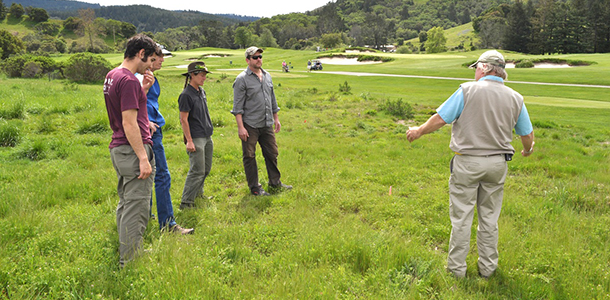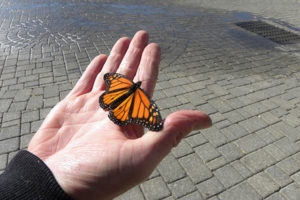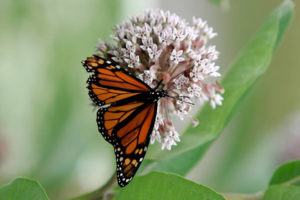‘Butterflies are Free’
Golf courses across North America are doing their part to save the Monarch butterfly and other pollinators. Through Audubon International’s popular “Monarchs in the Rough” initiative, over 700 golf properties have committed 1,020 acres to planting milkweed that monarchs need to survive.

By developing a unique partnership of golf course superintendents, golf management companies, Environmental Defense Fund, Monarch Joint Venture and the United States Golf Association (USGA), the golf industry is in a leadership position in the efforts to save pollinators and, specifically, the monarch butterfly and its legendary annual migration across North America.
In British Columbia, courses participating in this program included Fairmont Chateau Whistler, Arbutus Ridge, Salmon Arm, Penticton G&CC, Quadra Island, Tsawwassen Springs, Swaneset Resort and Richmond CC. They are among the 30 courses across Canada and the 250 so far across the U.S. that have committed to growing the flowers on a half hectare of land on their courses.

Chateau Whistler has signed up and is awaiting its shipment of seeds, according to the hotel’s head gardener, Jennifer O’Rourke.
She said “Monarchs in the Rough” fits in with the hotel’s plan to increase the number of pollinating plants to attract bees, hummingbirds and butterflies, she said. The resort’s bee hives produce 635 kilograms of honey a year for use in its restaurants.
”We don’t want to have a negative effect on the area,” said O’Rourke. “We occupy a large chunk of land on the side of the mountain and we want to keep it as natural and attractive as it can be.”
The orange-and-black beauties traditionally start their 5,000-kilometre migration north from Mexico to Canada, or a shorter distance from California to B.C., in early spring.
But a survey showed a 15 per cent drop in the numbers of monarchs in the fir forests of central Mexico where they hibernate each winter, according to report in March by the World Wildlife Fund and the Mexican National Commission for Protected Areas Right.
That meant 16 million fewer monarchs than this time last year.
The number of the summer visitors to flower gardens and wildflower fields has plummeted 90 per cent over the past 20 years, according to Audubon International.

“And it’s worse in the western population, where you are, where there’s been a 95 per cent drop in numbers,” said Marcus Gray of Audubon International.
In Canada, the monarch is listed as threatened on the Canadian government’s species at risk registry.
The eastern migratory group moves between east of the Rockies to the Oyamel Forest of central Mexico, where declines of greater than 50 per cent have occurred over the past decade. The western migratory group from southern B.C. overwinters along coastal California.
Milkweed is the only plant that Monarch caterpillars eat, which make it critical to the butterfly’s life cycle. Monarch butterflies, as well as many other pollinators, also feed on the nectar of milkweed flowers.
Many golf superintendents are already receiving positive feedback on their efforts from golfers, Boards of Directors and course owners.
Leveraging a $150,000 grant from the National Fish and Wildlife Foundation, Audubon International offers regionally appropriate seed mixes in key areas, along with technical assistance to superintendents and others in golf operations in creating, protecting, and maintaining milkweed and other native plantings. The organization is also tracking the success of the plantings from site preparation through full establishment.
Funding is now being sought to continue assisting superintendents interested in transitioning areas to native milkweed and wildflowers as well as those wishing to scale up now that they have observed how the project fits into their routine.

As more operations see the ecological and financial benefits enjoyed by their peers, the concepts are expected to spread, growing the habitat network butterflies use on their migration and for reproduction.
Cole Thompson, Environmental Research Director at the USGA, said, “Golf courses can serve as wildlife sanctuaries when they are managed properly. Monarchs in the Rough has made it easier for golf courses to get involved by establishing and enhancing pollinator habitat that directly benefits their communities. The USGA has been proud to champion this project as part of its ongoing commitment to sustainability and is excited by the program’s progress and future goals.”
The next phase of the work is to use Monarchs in the Rough plots as study sites to measure planting results, butterfly use and management practice adaptation in response to the need for lower inputs required for restored sites.
Visit monarchsintherough.org for more information.
(This article previously appeared in Pacific Northwest Golfer magazine, published by the PNGA.)






